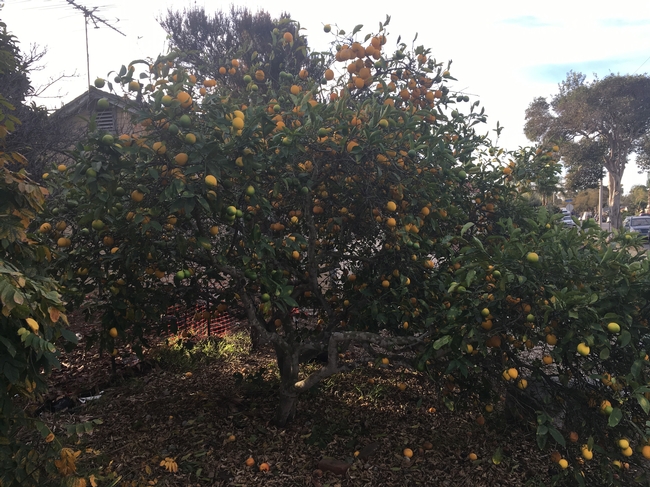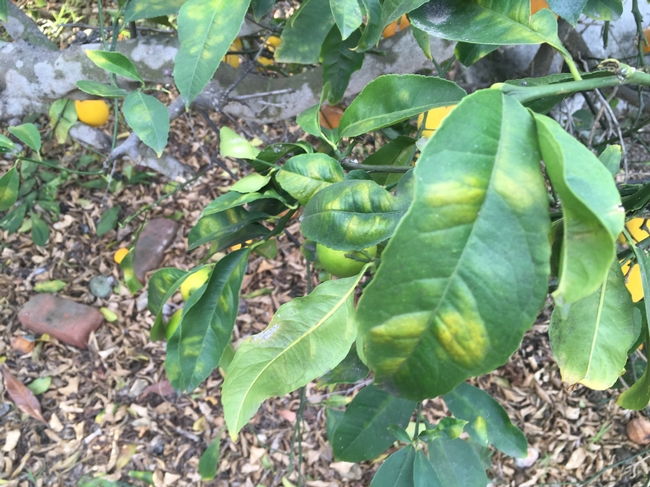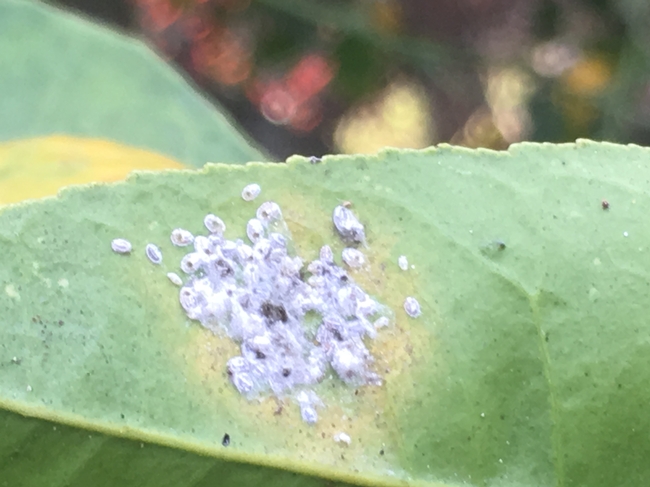- Author: Ben Faber
Biological control is the management of pests and their damage by the beneficial action of parasites (parasitoids), pathogens, and predators. These beneficial organisms, collectively, are named natural enemies.
Conserving (or protecting) and releasing natural enemies are important components of integrated pest management (IPM). In most situations, employing practices that conserve natural enemies is more effective, and less expensive and time consuming, than purchasing and releasing them.
Learn about the specific situations where purchasing and releasing parasites and predators can increase the effectiveness of biological control. Before purchasing natural enemies, consult the University of California (UC) IPM Pest Management Guidelines for that crop to learn whether UC research has shown that releasing them is effective. Some natural enemies on the market have never been demonstrated to effectively control any agricultural pest in California.
Obtaining Natural Enemies
Natural enemies can be purchased directly from various producers (companies that rear them) and suppliers (companies that purchase from producers and repackage and resell them). Some sources of parasites and predators are members of the Association of Natural Biocontrol Producers (ANBP). All ANBP members formally agree to a code of ethics and standardized methods.
Natural enemies purchased by users are commonly delivered via shipping services. Purchase parasites and predators only from in-state providers. It is illegal to obtain insects and other arthropods outside of California and carry or have them shipped across state lines without a permit from agricultural officials. Some pest control advisers and pest scouts will procure and release natural enemies as a service for growers.
Methods for Releasing Natural Enemies
Two methods for releasing natural enemies are inoculation and inundation:
- Inoculation—relatively few natural enemies are released. The offspring of these natural enemies provide biological control, not the individuals released.
- Inundation—large numbers of natural enemies are released, often several times over a growing season. The natural enemies released, and possibly their offspring, provide biological control.
The mealybug destroyer is an example of a natural enemy that is only released through inoculation—at relatively low numbers once per year early in the growing season. Aphytis melinus and Trichogramma parasites are released by inundation—at regular intervals over the growing season—to control California red scale and eggs of pest moths, respectively. Both inoculation and inundation can be used with predatory mites, depending on the situation.
Releasing Natural Enemies Effectively
Releasing natural enemies is most likely to be effective in situations where: 1) University of California researchers or other pest management experts have previously demonstrated success and 2) some level of pests and their damage can be tolerated in that crop. Desperate situations are not good opportunities for releasing natural enemies. Pests or their damage may already be too widespread for any release of parasites or predators to prevent economic loss of crop quality or quantity.
Increase the likelihood that natural enemy releases will be effective by
- Accurately identifying the pest and its natural enemies.
- Learning about the biology of the pest and its natural enemies.
- Releasing the appropriate natural enemy life stage and species.
- Releasing when the pests' vulnerable life stage(s) are present and at numbers that can be controlled by natural enemy releases.
Natural enemies are unlikely to be effective when released as if you were applying a pesticide. Instead, anticipate pest problems and begin making releases before pests are too abundant or economic damage is imminent.
- Remember that natural enemies are living organisms that require food, shelter, and water. Protect them from extreme conditions. For example, release them at night or early in the day during hot weather.
- Avoid applying broad-spectrum, residual (persistent) insecticides and miticides, and in some situations certain systemic or other pesticides, before or after releasing natural enemies. When needed, use pesticides selectively. For example, spot spray only where pests are abundant but localized.
Common reasons for the lack of satisfactory biological control after releases include the
- Application of broad-spectrum, residual insecticides, or in some situations systemic or other pesticides, prior to or after a release.
- Incorrect timing of release.
- Release of the wrong natural enemy for the pest situation.
- Release of a natural enemy species that is known to be ineffective.
For information on the use of biological control, see the UC IPM Pest Management Guidelines for your crop and specific pests. Most crops have a table called “Relative Toxicities of Insecticides and Miticides to Natural Enemies and Honey Bees” in the “General Information” section. Use these resources to guide pesticide selection to conserve natural enemies and improve biological pest control.
More Information
- Association of Natural Biocontrol Producers, Clovis, CA
- Grower Guide: Quality Assurance of Biocontrol Products (pdf), Vineland Research and Innovation Centre, Ontario
- Insectary Plants
- Natural Enemies Gallery
- Natural Enemies Handbook: The Illustrated Guide to Biological Pest Control
- Protecting Natural Enemies and Pollinators
- UC IPM Pest Management Guidelines
This Page is duplicated from the UC Integrated Pest Management website - https://www2.ipm.ucanr.edu/agriculture/natural-enemy-releases-for-biological-control-of-crop-pests/
Photo of predatory" mealybug destroyer" or Cryptolaemus
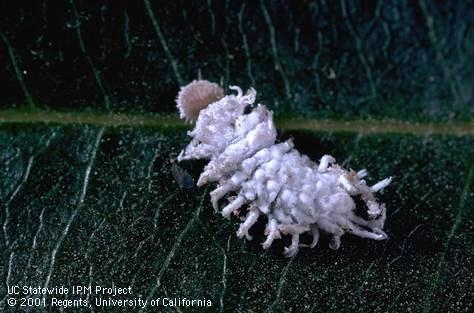
- Author: Ben Faber
Harry S. Smith, was born in 1883 to a poor farming family in Nebraska. He was trained in Biological Control in the northeast U.S.A. where he worked on the biological control of gypsy moth with the USDA. Upon his appointment to Sacramento in 1913 to work on biological control issues important to California, Smith brought recognized entomological training in biological control to California for the first time.
The phrase “Biological Control” was first used by Smith in August 1919 at the meeting of Pacific Slope Branch of the American Association of Economic Entomologists at the Mission Inn in downtown Riverside.
Based on his experiences on biological control of forest and pasture pests, Smith brought caution and tempered exaggeration about biological control in California as he worked with citrus growers and other commodity groups.
 In 1923, Smith and four colleagues moved from Sacramento to the University of California Riverside Campus which had evolved from the Citrus Experiment Station (est. 1915) and he formed the Division of Beneficial Insect Investigations which was a unit distinct from the Division of Entomology. Prof. Harry, as he was
In 1923, Smith and four colleagues moved from Sacramento to the University of California Riverside Campus which had evolved from the Citrus Experiment Station (est. 1915) and he formed the Division of Beneficial Insect Investigations which was a unit distinct from the Division of Entomology. Prof. Harry, as he was
affectionately known, is fondly remembered by his students as a patient and generous supervisor who encouraged research and work on applied and
practical aspects of biological control.
Smith went on to create the Department of Biological Control which offered the only graduate training in Biological Control in the world. The Department of Biological Control became the Division of Biological Control in 1969 which then merged into Department of Entomology at UC Riverside in 1988. Prof. Harry had two sons, both trained to be entomologists. Instead of pursuing biological control they went into the pesticide industry and Sam Smith died accidentally from pesticide poisoning. Prof. Harry passed away in 1957 and left UC Riverside $15,000 to develop a scholarship fund to support training and education in biological control. This fund has grown to approximately $45,000 today, but is insufficient to provide meaningful support to students wanting to be trained in biological control.
Our goal is to build the Harry S. Smith Scholarship fund to a significant level where the corpus of the fund will be able to generate enough revenue to provide substantial support to students wanting to be trained in biological control. This can only be achieved by actively soliciting donations from individuals, industries, and organizations that have benefited over the years from biological control projects that have that have been run by UC scientists, in particular entomologists at UC Riverside. If biological control is to continue to prosper in southern California we need to continue recruiting and training high quality students. To do this, we need to be able to provide substantial financial support, and the Harry S. Smith Scholarship is one way to attract excellent students to UC Riverside.
Learn more about the program and how you can push the fund over the top at:
http://biocontrol.ucr.edu/hoddle/harrysmithfund.html
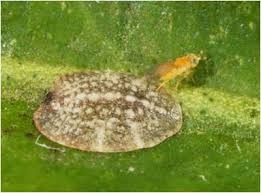
- Author: Ben Faber
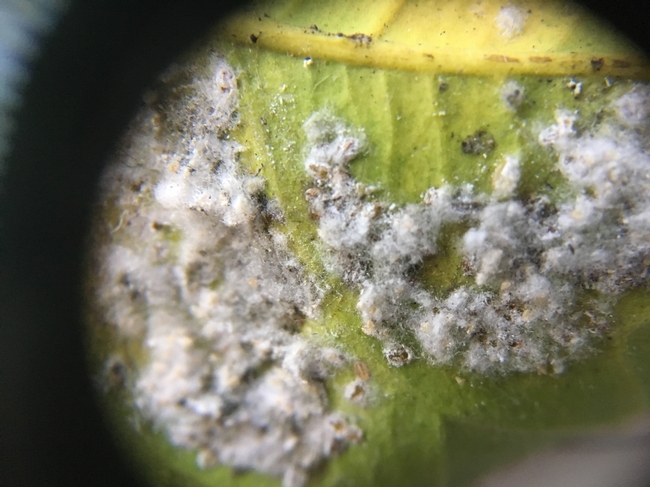
Wow, woolly whitefly covered with waxy, curly filaments , Aleurothrixus floccosus.
One of the consequences of fire and the resulting ash is that the biocontrol agents that keep whiteflies, scale, mealybug and other pests in balance is that they will spend so much of their time preening that they don't have time to go after their prey. Lacewing larvae, minute pirate bug, ladybird larvae, parasitic wasps and others rely on moving around to get at their food sources. When they cant move fast, they stop and clean their joints to stay limber. Whitefly and scale insects just hunker down and don't need to do a lot of moving. They just breed, and without actively moving biocontrol agents, their populations can explode. Or that's my human analogy. In dusty areas or areas affected by ash, the particles get in their joints and they need to spend time cleaning in order to move fast.
Whiteflies suck phloem sap, which in some cases can cause leaves to wilt and drop when there are high numbers of whiteflies. However, the primary concern with whiteflies is the honeydew they produce. Honeydew excreted by nymphs and adults collects dust and supports the growth of sooty mold; large infestations blacken entire trees, including fruit, as well as attract ants, which interfere with the biological control of whiteflies and other pests. The sooty mold can also affect tree yields by reducing photosynthesis and requiring extra handling time for cleaning.
So pests under good control prior to a fire can get out of hand. This is a good example of a tree in the town of Ventura where ash was a problem. A seemingly clean tree, free of whitefly, started to defoliate with blotchy leaf spots. On the undersides of the leaves corresponding to the blotches are colonies of whitefly. And looking closely you can see that some of the nymphs have exit holes, indicating that they have been parasitized by a wasp. So nature is kicking in and taking it's course. The whitefly should get cleaned up soon too by some forager, such as lacewing larvae or pirate bug. No need to spray because it would just be a further disruption.
See more about whiteflies at:
http://ipm.ucanr.edu/PMG/PESTNOTES/pn7401.html
Photos: Defoliating 'Meyer' lemon tree, blotches on upper side of leaf, whitefly colonies with exit holes in some of the nymphs
